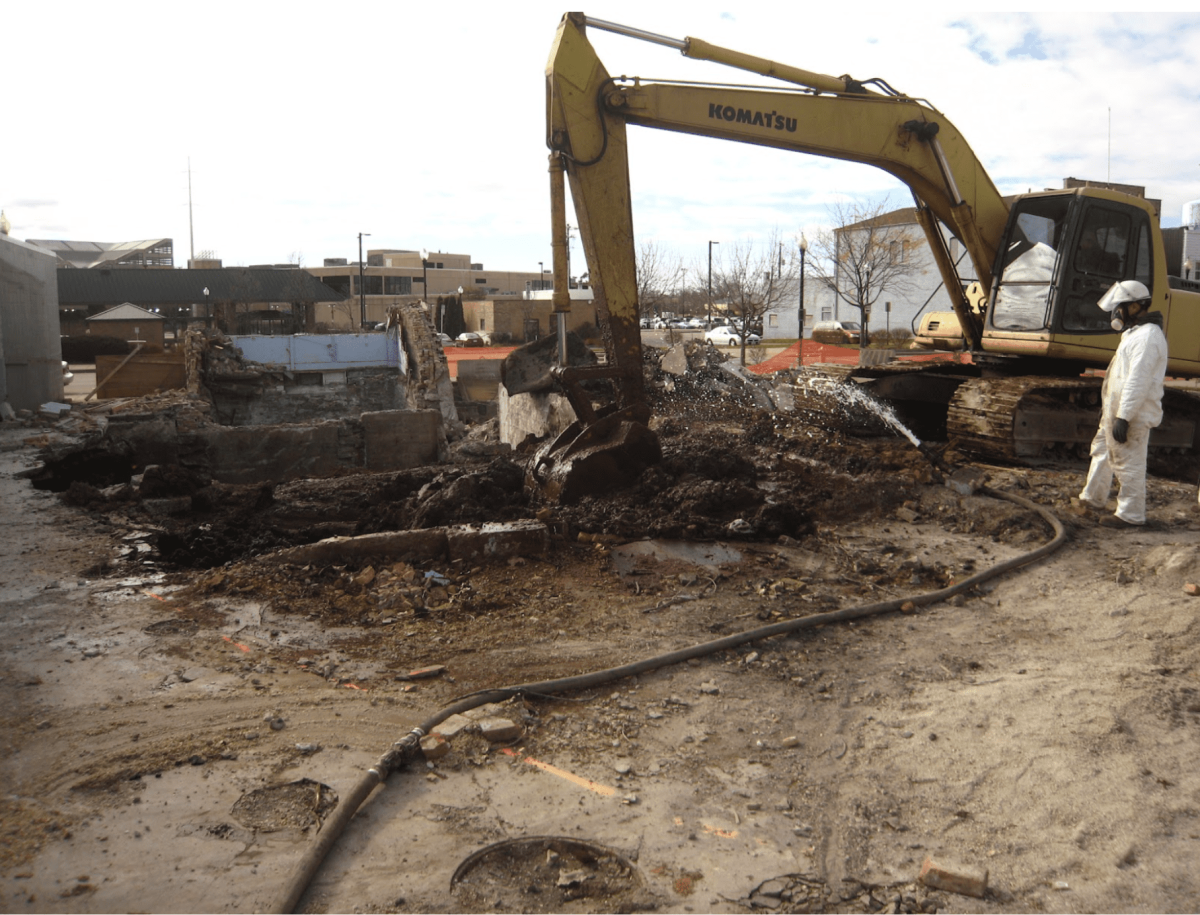Key steps in a brownfield cleanup process
For brownfield sites, the specific contaminants and extent of contamination — unsafe levels found in soil, water or air from industrial and commercial use — determine specific steps used for the cleanup process. While one location may only need an independent cleanup, another site may require the involvement of state and federal regulators. Regardless of the cleanup methods, various technical and financial challenges sometimes prevent such projects from removing enough contaminants from a brownfield site to meet standards for unrestricted use.
Depending on the property's intended reuse, a majority of brownfields and other contaminated sites are cleaned up using a risk-based approach. This strategy combines commonly used cleanup methods along with engineering or institutional controls to reduce exposure to any remaining on-site contaminants.
Below, we discuss some key steps in a brownfield cleanup process and explain how working with an experienced environmental consultant can help clarify budgets, identify means of finance and avoid any unnecessary delays in redevelopment project timelines.
Brownfield cleanup process: An overview
Because every brownfield redevelopment project is different, basic steps taken by the local government or municipality to clean up and redevelop a site can vary or occur in a different order. Irrespective of the project's complexity, there are key steps in a brownfield cleanup process.
- Identifying stakeholders and interested parties for future (re)use of the site.
Key parties in a brownfield redevelopment project might include current and past owners of the property, private businesses interested in developing the site, civic organizations, community members, local municipalities, government agencies and others. This step also includes investigating the property's legal ownership and status and reviewing tax records and any liens. Future land use affects cleanup objectives, so identifying a site's end user(s) and intended reuse is critical for successful projects.
- Conducting environmental assessments with the help of an environmental consultant, obtaining estimates for cleanup and redevelopment costs.
Environmental Site Assessments (ESAs) and cleanups require the professional expertise of environmental consultants. They collect information on the site's environmental conditions and determine — via sampling and analysis — contaminants harmful to the surrounding population. The findings in site assessments also help determine cleanup costs and estimate a timeline for the process. In some cases, assistance may be available from state and federal regulatory agencies, depending upon site eligibility.
- Creating a site cleanup plan and alternatives based on assessment findings and desired end-use.
Based on the initial site investigation and ESAs, environmental engineers design a brownfield cleanup plan to meet the redevelopment objectives. The effectiveness of cleanup alternatives may also be considered within the context of projected climate change risks.
- Determining funding resources: Private, municipal and grant funding (local, state, federal).
Various sources of funding are available for brownfield site cleanup and redevelopment. Funding stacks vary from simple, single-source funding to complex combinations of loans, grants, local matching funds and developer funding. Many cities establish Tax Increment Financing (TIF) districts, along with available Environmental Protection Agency (EPA) and federal grants, bonds, private funds and general tax revenue. To some extent, the money generated by TIF districts and the sale of the property can also help communities fund redevelopment projects.
Actual cleanup
The cleanup process is usually overseen and conducted to the satisfaction of regulatory agencies. The technology used to clean up a brownfield site depends on the cost and contamination characteristics of the site. A typical approach in Illinois is to address and remove source contamination and then rely on controls to sever the exposure pathway to humans and the environment. Some commonly used methods for the brownfield cleanup process include:
- Excavation: Excavation at a brownfield site involves digging up contaminants along with the contaminated surface or subsurface soil and transporting everything for ex-situ treatment or landfill disposal. The excavated area is then filled in with clean soil to create a level surface.
- Tank removal: Sites with underground storage tanks (USTs) have soil potentially contaminated with gasoline and other fuels. After the USTs and piping systems are removed, the soil is examined for contamination and removed as required.
- Barriers and cover systems: Physical barriers or fences are installed along the site's circumference and contaminated soil is capped using a geotextile, a layer of clean soil or both to protect cleanup areas and prevent spreading contaminants.
- In-situ treatment and bioremediation: This involves injecting chemicals into the soil to break down contaminants or convert them into less toxic byproducts. Binding or chemical agents are also added for solidification or stabilization and to prevent contaminant movement.
- Phytoremediation: Microbial growth is facilitated in contaminated soil by adding nutrients, oxygen or chemicals. The microbes consume organic contaminants and degrade them to water, gas or less-harmful toxic compounds.
- Lead and asbestos abatement: Specially trained, licensed contractors are required for lead and asbestos removal. They remove contaminated material from the contained area using specialized equipment.
Institutional and preventive controls
When contamination is present on-site after a cleanup, institutional and preventive controls are instrumental in controlling off-site migration, limiting human exposure and making sure the land remains safe for its intended use. Institutional controls include legal and administrative tools like zoning and land use restrictions, covenants and easements to keep the surrounding community informed about site conditions. Preventive or engineering controls include physical barriers or fences, subsurface venting systems and soil caps.
Negotiating redevelopment agreements with end-user/developer: Selling property and transferring ownership of the land
Once a redevelopment agreement is finalized with the site developer or end-user, the title is transferred to designated parties so they can move forward with infrastructure improvements. Any bonds or loans issued for the project are also paid off during this phase.
Once a redevelopment agreement is finalized with the site developer or end-user, the title is transferred to designated parties so they can move forward with infrastructure improvements. Any bonds or loans issued for the project are also paid off during this phase.
At Fehr Graham, our environmental consultants and engineers have been helping municipalities and developers with brownfield redevelopment projects since the 1970s. Our team stays updated on EPA standards for contaminant levels to help you conduct thorough due diligence on a brownfield site, including comprehensive and customized ESAs. From developing an effective cleanup process and waste management to securing funds for cleanup activities, we are a one-stop solution for communities considering remediation projects for contaminated sites.
Fehr Graham is a team of passionate environmental engineers, consultants, scientists and other professionals who are committed to improving the quality of life in communities where our clients live and work. To learn more about how we can help you plan an effective brownfield cleanup process, contact us or give us a call at 815.394.4700
 |
Ross Grimes, a Professional Geologist, focuses on remediating properties that have been longtime eyesores. He cares about the environmental future where he lives and works, so dilapidated properties with even the smallest potential are his passion. Ross is dedicated to doing the right thing every day and addresses challenges with innovation, sustainability and common sense. Contact him at |
Collaborative, Insightful, Results-Driven Solutions
Fehr Graham provides innovative engineering and environmental solutions to help improve the lives and communities of our customers.

